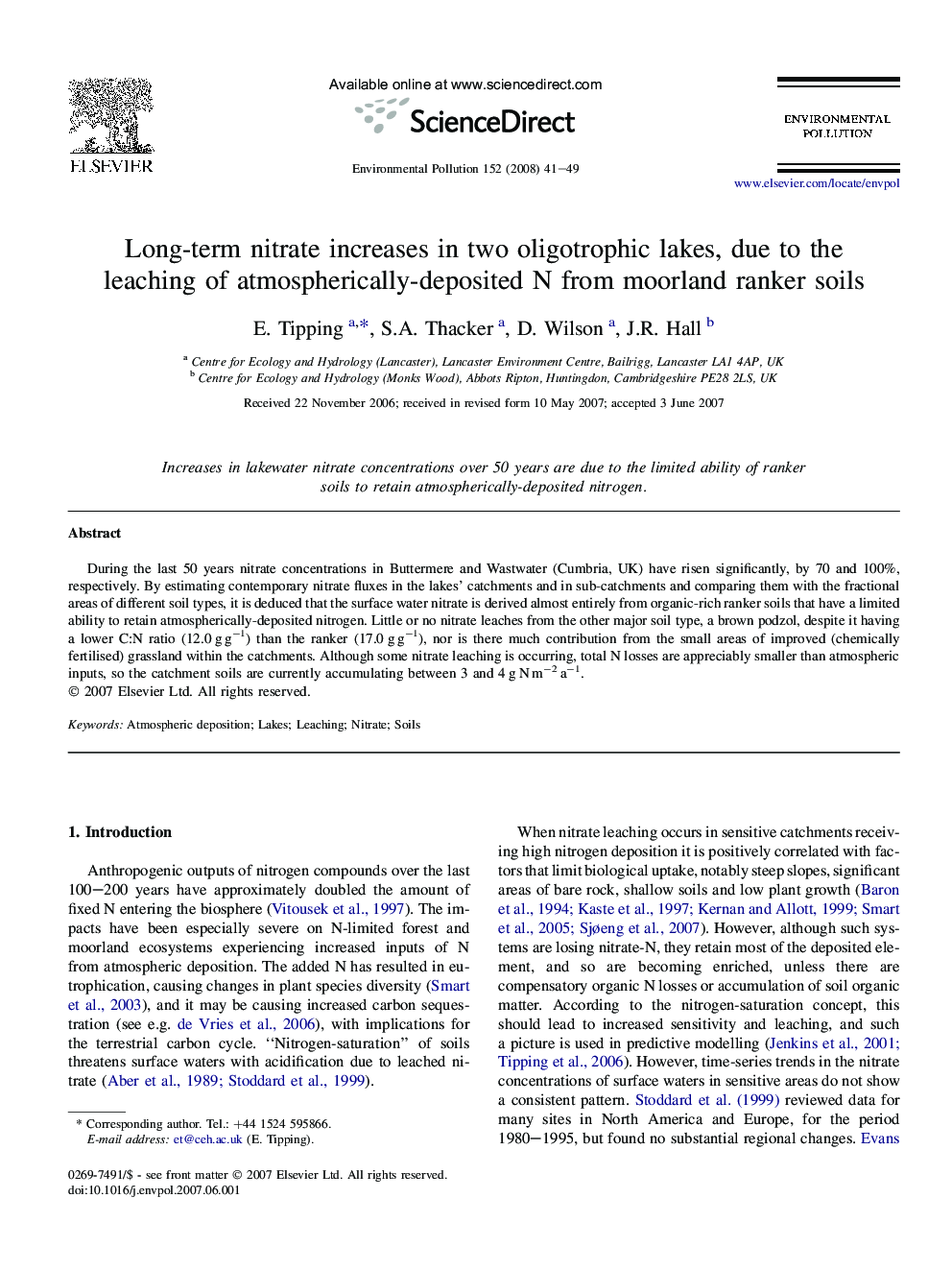| Article ID | Journal | Published Year | Pages | File Type |
|---|---|---|---|---|
| 4426932 | Environmental Pollution | 2008 | 9 Pages |
During the last 50 years nitrate concentrations in Buttermere and Wastwater (Cumbria, UK) have risen significantly, by 70 and 100%, respectively. By estimating contemporary nitrate fluxes in the lakes' catchments and in sub-catchments and comparing them with the fractional areas of different soil types, it is deduced that the surface water nitrate is derived almost entirely from organic-rich ranker soils that have a limited ability to retain atmospherically-deposited nitrogen. Little or no nitrate leaches from the other major soil type, a brown podzol, despite it having a lower C:N ratio (12.0 g g−1) than the ranker (17.0 g g−1), nor is there much contribution from the small areas of improved (chemically fertilised) grassland within the catchments. Although some nitrate leaching is occurring, total N losses are appreciably smaller than atmospheric inputs, so the catchment soils are currently accumulating between 3 and 4 g N m−2 a−1.
